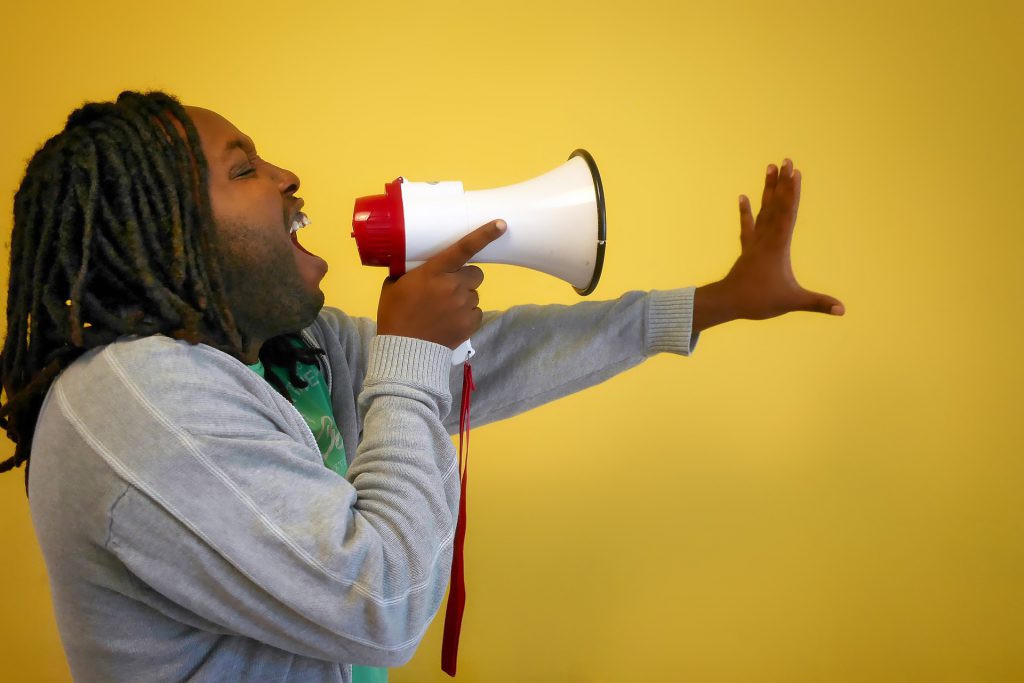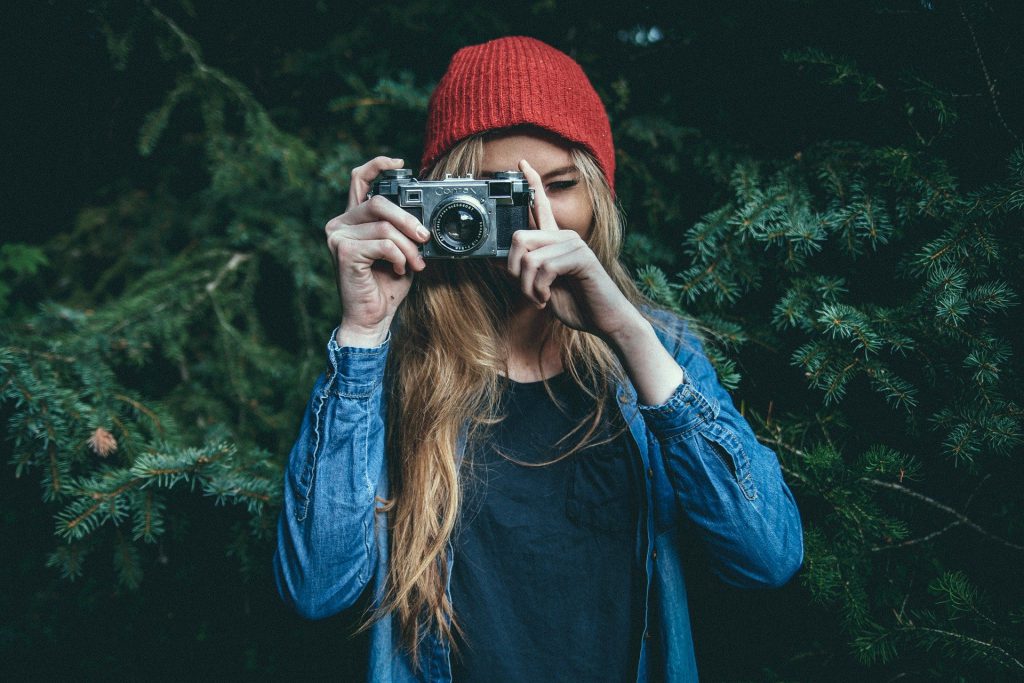Raising your voice and shouting out what concerns you. That’s what some people want to do when it comes to issues such as equality, diversity or solidarity. What can be heard only as a brief shout and then perhaps fades away, can be captured with a low-threshold photo activity à la loudhailer and captured for a longer time. Because pictures can be a mouthpiece for what people have to say, can shake things up and stimulate discourse.
Photo campaigns with a statement
Examples such as the interview without words “Sagen Sie jetzt nichts” (“Don’t say anything now”) by Süddeutsche Zeitung show how much can be expressed by briefly thinking about a topic and taking a stand in a picture demonstrating one’s own position.
If you add a short statement in the form of a sign or a slab, you can express even more, as shown by the photo campaign Loudhailer with young people at an event at the Munich city hall. With megaphone and sign in hand, young visitors were able visually shout out their personal demand for tolerance. The resulting photos captured the different statements and were also used afterwards in campaign flyers to gain more public attention.
The photo campaign “Vorurteile sind wie ein Brett vor dem Kopf” (“Prejudices are like a board in front of your head”) by “Nuremberg is colourful” is a similar activity, where people want to put an end to prejudice and stereotypes through their pictures.
No matter where and in which context, a photo campaign can motivate people to grapple with different topics. And the practical implementation is not difficult.
Preparation
Although it does not require much effort on the part of the participants and only little time for the individual photos, you should prepare well. First, think about a suitable setting and find a good place where you can meet many people who have something to say. Larger events, such as trade union meetings, but also public spaces, such as the city centre, are ideal for encouraging people to make a statement. In order to avoid trouble, you should clear the campaign with the organisers or responsible persons.
First of all, clearly determine for yourself what exactly your topic is and phrase a specific task. The clearer the task, the more readily people will get involved.
Not much is required from a technical point of view:
- A camera/tablet/mobile phone, anything you take pictures with
- A board or posters
- Possibly a megaphone (optional, to lend visual support to the “loudness character”)
- If you have more budget, you can also invite a professional photographer and set up a photo background. This not only results in better pictures, but also lends the whole thing more character and visual importance.
Important: Make sure you respect the right to one’s own image! Since the photos are to be distributed, you should take particular care that the people filmed have given their consent, preferably in writing.
Get the camera ready, go…
Find people who have something to say and make them aware of your campaign and introduce them to your project. Make the purpose of your campaign clear, because it takes a lot of courage to let oneself be photographed expressing one’s own opinion.
They will probably need a little time to consider their statement and write it down. Support them by giving them impulses to discuss the content or by asking them short reflective questions. Once the participants decided on their statement, it is important to have them write it legibly on the board or sign. It would be unfortunate if a good statement fizzles out because it cannot be deciphered. Then it’s time to take photos.
Creative tips
Your photos will look best if you come up with an idea for the image beforehand and then follow it through consistently. Think about how you want to stage the people, e.g. everything in black and white, or always a megaphone in the photo, or everyone making a certain movement, or, or, or…
If you take photos with a smartphone or tablet, simply use an editing app to touch up the pictures and create a consistent look.
Communicate and utilise your images for publicity
You can then use the results (provided the permission was given) to convey the individual views and statements of the participants to the general public. For example, there can be an analogue or digital exhibition or a dedicated Instagram channel on the topic, which is regularly fed with new campaigns.
Tip: If you want to turn the pictures into beautiful postcards or posters, try the free design platform Canva. It provides a wide variety of design templates to choose from, wraps up your content nicely and prepares it for printing.
But the pictures can also be used in seminars for creating discussion topics and stimulating debate. That way, your photo campaign also becomes the subject of (political) education.
Conclusion
Photo campaigns offer a low-threshold yet sustainable way to make your message heard. You kill two birds with one stone: by being visible with your campaign on site, you draw attention to your issue. If people then express their views with a statement, you can later distribute the results to the public in an effective way.
Read more:
For more information on media campaigns, see: #dido_37: Mini video campaigns in the form of cinema trailers
Author: Katharina Nierhoff
Lust auf mehr? Zu allen Beiträgen der Serie kommst du HIER!

Dieses Werk ist lizenziert unter einer Creative Commons Namensnennung-NichtKommerziell-Weitergabe unter gleichen Bedingungen unter gleichen Bedingungen 3.0 Österreich Lizenz.
Volltext der Lizenz



